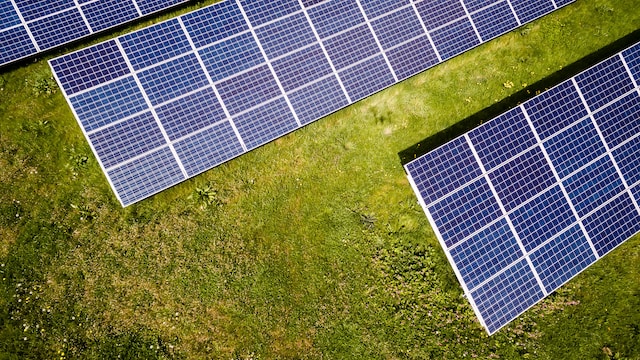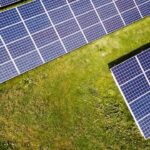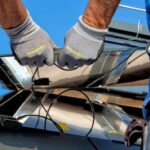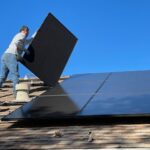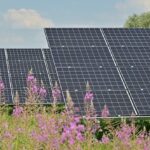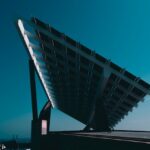Chinese Solar Companies Embrace US Expansion Amid Challenging Global Dynamics
In an era of renewed globalization, where global economic ties are strengthening, Sino-American relations are heading in the opposite direction. The United States continues to tighten its grip on Chinese enterprises, imposing stricter restrictions and sanctions. Faced with this situation, Chinese photovoltaic (PV) companies are embarking on a new wave of factory construction in the US, recognizing the undeniable importance of the American market.
In just the first half of this year, six Chinese PV companies—Trina Solar, JA Solar Technology, Longi Green Energy Technology, Canadian Solar, TCL ZHONGHUAN, and Hounen Photoelectricity—announced plans to establish manufacturing facilities in the United States. When combined with Jinko Solar and Seraphim, which already have factories in the US, the total number of Chinese PV companies with manufacturing operations in the country has reached eight. Collectively, they plan to have a production capacity exceeding 16 GW, marking the beginning of the second phase of globalization for China’s PV industry, known as “PV Globalization 2.0.”
Since 2023, the trend of Chinese PV companies establishing factories in the US has intensified, with a total projected capacity exceeding 18 GW. The following are some key developments:
- In January 2023, JA Solar Technology announced a $60 million investment to lease land in Phoenix, Arizona, for the construction of a 2 GW PV module factory. Within a month, the investment increased to $1.244 billion.
- In March, Longi Green Energy Technology announced a joint venture with US clean energy developer Invenergy to build a 5 GW PV module manufacturing plant in Ohio.
- In April, Jinko Solar, which had established a factory in the US in 2017, announced an additional investment of $81.37 million to expand its production line to 1 GW of solar module capacity in Jacksonville, Florida.
- In May, Hounen Photoelectricity revealed a $33 million investment in a 1 GW solar cell project in South Carolina.
- In June, Canadian Solar announced an investment of over $250 million to establish a 5 GW module production base in Mesquite, Texas.
- On September 11th, Trina Solar, a leading PV module manufacturer, followed suit by announcing a $200 million investment in the construction of a solar PV module factory in Wilmer, Texas. The factory is expected to have an annual capacity of around 5 GW and is set to begin production in 2024, using polysilicon procured from the US and Europe, providing 1,500 local jobs.
From an economic perspective, it is an undeniable fact that China has a significant cost advantage in the entire PV supply chain. Its costs are 10% lower than India, 20% lower than the US, and 35% lower than Europe, contributing to the rapid rise of the PV industry in China.
Considering these cost advantages, one might wonder why mainstream manufacturers are so eager to enter the American market, despite the lack of cost competitiveness for manufacturing in the US. The primary driver for Chinese PV companies to establish factories in the US is the ongoing US-China trade friction.
As early as November 2011, the US Department of Commerce initiated a “double reverse” investigation against PV cells and modules originating from China, resulting in a significant decline in Chinese PV product sales in the US. This shadow of “double reverse” led to the bankruptcy of some Chinese PV companies and severe losses for others, including Yingli.
In 2014, the US initiated a second “double reverse” investigation targeting PV cells and modules not covered in the 2011 investigation, further impacting the Chinese PV industry. This trade dispute has continued for a decade, causing various hardships for China’s PV industry. To circumvent the anti-dumping measures in Europe and the US, some Chinese PV companies chose to build factories in Southeast Asia. According to US official statistics, nearly three-quarters of PV modules installed in the US in recent years came from Southeast Asia.
Southeast Asia has unique geographical advantages and a relatively mature manufacturing infrastructure. As a knowledgeable investor familiar with the Southeast Asian market pointed out, “Large enterprises involved in the entire new energy manufacturing chain have a presence in Southeast Asia. The industry chain here is relatively mature, covering mining, battery manufacturing, module production, and even battery recycling.”
Now, with the anti-circumvention investigations taking effect in the US, the Southeast Asian option has also been closed off. On August 18th, the US announced the final rulings of anti-dumping and countervailing duty investigations on Chinese PV products, identifying five Chinese PV cell and module companies doing business in Cambodia, Malaysia, Thailand, and Vietnam to avoid paying tariffs on Chinese-made solar products since 2012. These five companies, controlled by BYD Hong Kong, Canadian Solar, Trina Solar, and Longi Green Energy Technology, will face punitive tariffs once again.
With normal trade channels blocked, Chinese PV companies are left with no choice but to establish manufacturing facilities in the US to circumvent tariff barriers. It is a rational choice for these companies, even though it comes with challenges.
Beyond avoiding trade disputes, the US market presents significant value for Chinese PV companies. Firstly, there is a massive demand for PV products in the US, but domestic production capacity is severely lacking. The United States is the world’s second-largest single PV market, boasting sizeable growth and ample profit margins. In 2022, the US added over 20 GW of PV capacity, with plans to reach 63 GW by the end of 2024—an almost 80% increase in installation over the next two years. In stark contrast, current US domestic module capacity is less than 7 GW.
The cost of modules in the US is approximately $0.1/W higher than the international market. In terms of profitability, US domestic module manufacturing is projected to achieve a profit margin of “26%-32%” by the end of 2023, according to a BNEF report. This is significantly more attractive than the single-digit profit margins for integrated PV module manufacturers in China. The high profitability can be attributed to substantial support from the US government for the domestic PV industry.
Moreover, the US has introduced a comprehensive subsidy plan for domestic manufacturing, which benefits foreign companies establishing factories in the country. From Trump to Biden, the US has consistently supported the “reshoring” of manufacturing, with a particular focus on new energy manufacturing. Although the US has imposed tariffs on Chinese PV products to protect its domestic manufacturing, it welcomes Chinese PV companies and other foreign entities to set up factories in the US.
In August 2022, President Biden announced the Incentives for Renewable Adoption (IRA) Act, which allocates approximately $369 billion to support the development of clean energy in the US. These incentives include a 30% investment tax credit for facility and equipment investments, matching the timeline of the Investment Tax Credit (ITC). Additionally, subsidies are provided to companies based on price standards such as $3/kg for silicon materials, $12/m² for silicon wafers, $0.04/W for solar cells, and $0.07/W for modules. The IRA Act has a ten-year duration and is highly attractive to foreign companies, offering visible support for initial investment costs. Some industry insiders have estimated that subsidies currently account for half of the selling price of US modules. Based on these incentives, a 5 GW module factory can recoup $250 million in investment costs within two years through tax credits.
Balancing the hefty tariffs with the sweet rewards of subsidy policies, Chinese PV companies have embarked on a strategic move to establish manufacturing facilities in the US to maintain their market share in the country.
